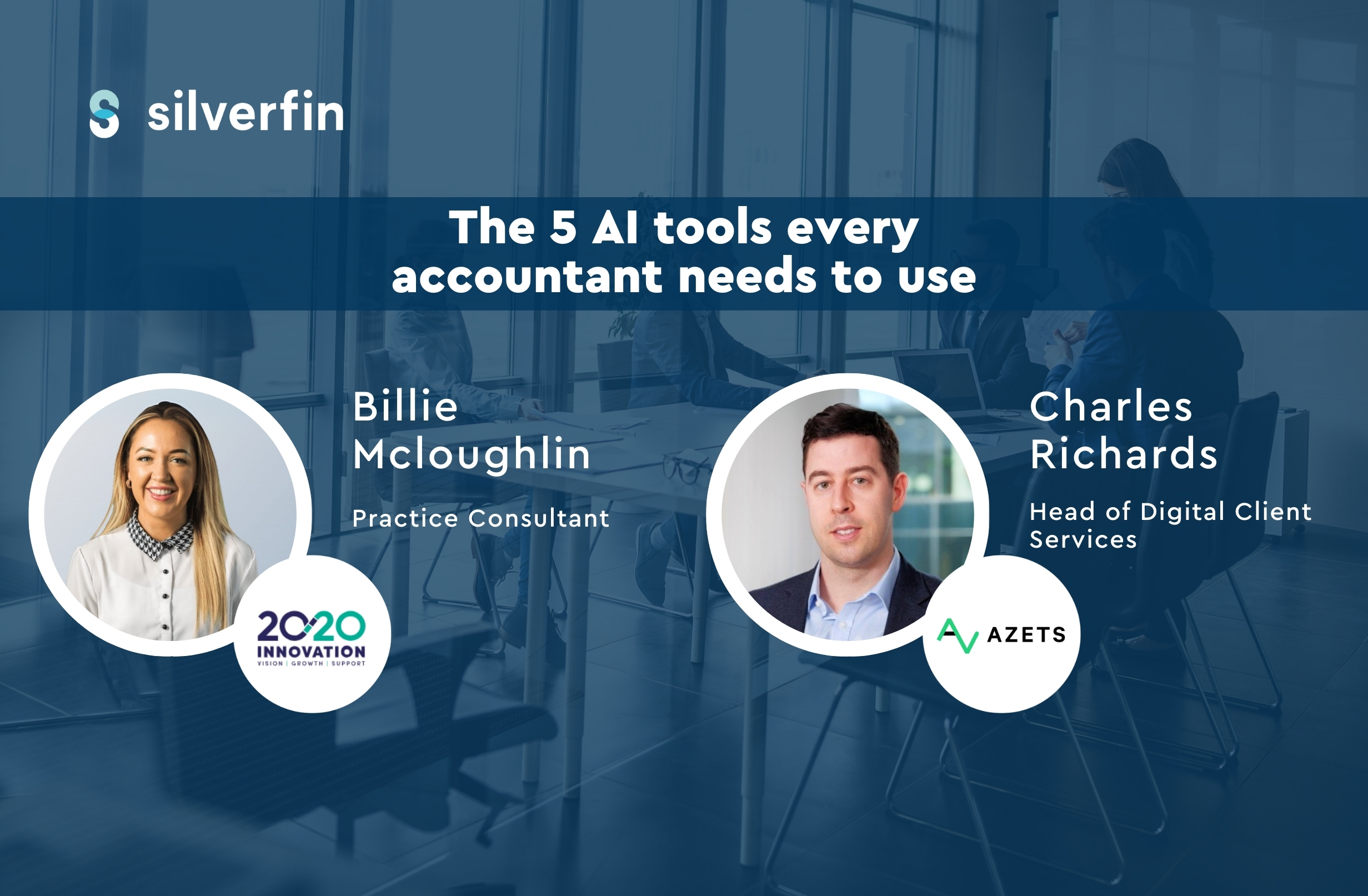For better or worse, a big part of my life this past decade has been spent trying to understand what accounting firms really want. Even when sometimes they themselves aren’t too sure. I’ll ask questions like ‘what are your main goals for the next couple of years?’ and ‘what are you doing to make those goals a reality?’. I like these two questions particularly, because despite being intentionally open (and slightly leading) I can see that they get people thinking.
I’m always a little concerned when I ask a firm what their goals are and they look at me blankly, like I’ve just asked them the meaning of life. Firms that don’t have specific plans and ambitions tend to just keep standing still. But fortunately most do seem to have a clear set of goals in mind, and what’s more they have an idea of how they are trying to achieve those goals.
With the type of firms I speak to (certainly since joining Silverfin) both of the aforementioned questions seem to have fairly common answers. The conversation tends to go something like this;
Q. What are your goals for the next couple of years?
A. Growth. We want to grow the firm’s revenue by X amount in Y timescale
Q. And how are you looking to achieve that growth?
A. By acquisition. We want to acquire X amount of clients and/or smaller firms by Y date
Now I’ve been in the accountancy software market for 15 years or so, and I must admit that this theme is new to me. 5 years ago most firm’s growth strategies involved taking on more staff or building out a more ‘advisory-based’ client service. However, with the well-covered talent shortage and nobody still sure exactly what ‘advisory’ really means, firms have been forced to explore other avenues. And I’m not just talking about large firms. Of course there are some PE backed giants who have been acquiring their way to the top for several years now, and it has worked very well for them. But growth through acquisition now seems to be more common with mid tier firms who might not have considered it an option in the past. And with such a challenging economic climate, as well as impending new tax legislation, it does appear that a lot of long established firms are open to selling/merging to avoid decline. I expect this trend to continue and many firms to whom acquisition might not have seemed an option just a few years ago may now look to reconsider in order to accelerate their growth.
So clearly there are some key benefits to this model and its more prevalent than its ever been before. But there are also some key themes to consider and some potential pitfalls to be aware of in this acquisition market. The purpose of this blog is to help firms who are looking to acquire (perhaps for the first time) navigate some of the common challenges I have seen.
- Analyse the client baseAny firms you’re looking to either acquire or merge with should have a client base which loosely matches your own, or fits in with your future strategy. So often I’ve seen firms acquire a new client base only to find that those clients are in fact not aligned with your preferred service model or your growth goals. Analysing a client base needs to be more than just looking at clients types, sectors and services. It should be an analysis of how much time is spent on each client job vs the fees that client pays. It should also compare prices clients have historically been charged. Any with a long-standing relationship which have earned them ongoing discounts should be red flags. It is not just about knowing the £ value of your new client base, but knowing what they are expecting from you in order for you to realise that £ value.
- To re-brand or not to re-brandClearly, any firms you acquire will have their own brands and their own reputations. I have seen some really good examples of firms being acquired and instantly adopting their new parent firm’s name and brand. I have also seen examples of client’s leaving in their droves after a re-brand because ‘this isn’t the business I signed up to become a client of’. In many ways this feeds into the first point on understanding the client base. A firm with consistent and professional relationships with their clients should be able to re-brand as long as the ‘why’ is well communicated with the client base by all parties. Communication not just from the acquired but also the acquirer to the clients (in as personal a way as possible) is crucial.There’s no right answer as to whether to re-brand or not, but you should certainly have identified your preference before entering into the acquisition process. My advice would be that if you’re looking to acquire multiple firms over a period of time, then growing a single brand has its benefits in terms of awareness.
- Cloud is kingWhen it comes to technology, the main challenge you face in acquiring (particularly for the first time) is in having multiple offices. Fortunately, having a workforce across multiple locations is something we are all more comfortable with now than a few years ago (I’m not going to mention the C- word). Accounting firms have had a tougher time than most sectors when it comes to sharing technology across multiple locations though. Sure, we are lucky to have client’s primarily using SaaS products like Xero and Quickbooks, but most of the software accountants use in-house is still either server based, or accessed via a patchwork of remote desktops or Citrix connections. At the point of acquisition this problem and its associated costs will be accentuated. On top of all the education for these new staff and new clients, the last thing you want is to be working a part time job as IT support. This is where specialist outsourced IT providers such as T Tech can help. The ease of accessibility of your systems needs to be smooth and scalable. That’s not to say that the firm’s you are looking to bring into the fold need to be cloud native from the outset, but they need to be open to making the transition in that first year.
- Whatever you do, do it the same wayThis is the one most close to my heart. You might not want to standardise the branding across firms in your umbrella. You might not even (against my earlier advice) want to standardise the client cost base. But if you do nothing else, standardise your working processes across your network. The biggest pitfall I have seen with acquisitive growth models, is parent firms who do not understand the processes of their member firms. If for example you merge with a firm who uses different software and different workflows to service clients, you will never be able to compare apples with apples when it comes to KPIs or productivity metrics across firms. To be able to compare job costs against time spent, and levels of efficiency you absolutely MUST standardise all offices/member firms working practices. An example might be working paper templates. If your 3-4 offices have completely different ideas about what a working paper for a limited company should look like, then you’ll never have true visibility or consistency of service. And this really feeds into the previous point on cloud solutions. If you do use a cloud platform for client work, then new firms/staff can be rolled into this platform very easily and from day one you’ll know their workflows / file templates etc are consistent. What that then allows you to do is report across your entire client base and workforce at a parent firm level. Getting this process standardisation piece right is the single thing that can (more than any other) take the pain out of acquiring. It also means you can be up-front with other potential member firms about how things will be done post-merger, which puts them in a position to advise on how suitable you really are for each other.
- IntegrateI know what you are thinking. And yes, you should be integrating your software solutions (e.g accounts production with corporation tax). But what I’m actually referring to here is integrating your new team members with the ones that have been around from the beginning. Speaking from very personal experience, it is easy to make a newly acquired business feel part of a vision and a wider strategy. What is harder is making them feel part of a wider team. Integrating people, even if they aren’t going to be working together regularly, is the key to building a multi-office, multi-business organisation. Get this bit wrong and you can find your new group members feeling like ugly step children. And when they leave, the chances are that their clients will go with them. We all know there is a talent shortage right now and good people are hard to find and harder to keep. Getting people together and making them feel part of something bigger is the key to a successful growth model.
I hope this has helped provide some food for thought for anyone looking to dip a toe into potential acquisitions, or those who continue on a successful acquisitory journey. I’m certainly not claiming to be an expert in this space, but I’ve got enough grey hairs to have seen some good and bad examples of this growth strategy. Personally I think it’s an exciting time to be in our profession and those with ambitious growth models are continuing to discover that fortune favours the bold.















